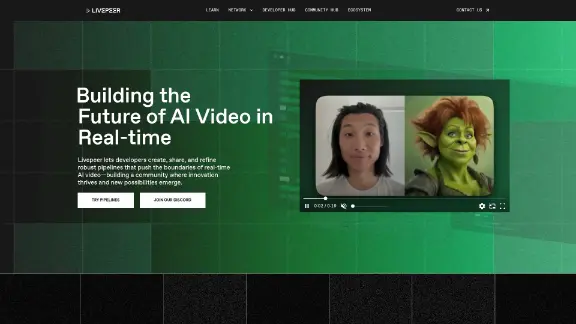Livepeer (LPT)
Livepeer is a decentralized live streaming platform that operates on blockchain technology. Designed to provide a more affordable, scalable, and decentralized broadcasting solution, Livepeer combines a blockchain-based crypto-token protocol with economic incentives and an open media server. This aims to offer a broadcasting alternative that surpasses existing centralized platforms.
Overview
Livepeer is a decentralized, scalable, and crypto-token incentivized live video streaming network protocol. It offers a cost-effective solution for app developers and broadcasters compared to traditional centralized systems. The protocol involves three primary roles:
- Orchestrator: Responsible for ensuring that transcoding jobs are correctly performed for end-users.
- Transcoder: Converts input video segments into desired outputs.
- Broadcaster: Handles input streams from users and transmits them for transcoding through Livepeer's infrastructure.
Livepeer intends to create a crypto-economically incentivized protocol and open media server for live video broadcasting by utilizing peer-to-peer infrastructure within a marketplace secured by the Ethereum blockchain. It is an open project that invites contributions from individuals with diverse skills and interests.

| Ticker | LPT |
| Category | Artificial Intelligence (AI) |
| Website | https://livepeer.org/ |
| @Livepeer | |
| Telegram | livepeerorg |
| https://www.reddit.com/r/livepeer | |
| Contract Addresses | |
|---|---|
| ethereum | 0x58...39 Copied! Copied! |
| arbitrum-one | 0x28...39 Copied! Copied! |
| harmony-shard-0 | 0xbd...7c Copied! Copied! |
Livepeer token
The Livepeer Token (LPT) serves as the protocol token for the Livepeer network, though it is not used as an exchange medium. Broadcasters utilize Ethereum's Ether (ETH) for broadcasting, while nodes contributing processing and bandwidth earn ETH as fees. LPT is a staking token used to coordinate network work distribution and ensure security and honesty in task completion.
LPT has several key purposes:
- Bonding Mechanism: Acts within a delegated proof of stake system, securing the network against attacks by slashing tokens in case of protocol violations.
- Work Coordination: Routes work proportionally to the staked and delegated tokens.
- Unit of Account: Specific to the Livepeer ecosystem, potentially enabling future functionalities.
Protocol roles
The Livepeer Protocol outlines how actors in a live streaming ecosystem participate securely and economically. It addresses the distribution of live video to numerous consumers and the incentives for network participation.
Node roles
Nodes running Livepeer software can serve different roles:
- Broadcaster: Publishes the original stream.
- Transcoder: Converts streams into different formats.
- Relay Node: Distributes live video and protocol messages.
- Consumer: Requests streams for viewing or serving to users.
System roles
- Swarm: A content-addressed storage platform for temporary data availability.
- Livepeer Smart Contract: Operates on the Ethereum network.
- Truebit: A protocol ensuring computation correctness on the chain.
Consensus
Livepeer employs a two-layer consensus system. The LPT ledger and transactions are secured by blockchain technology like Ethereum. The second layer, managed by the Livepeer Smart Contract, governs the distribution of newly generated LPT and outlines participation rules. This is based on Delegated Proof of Stake (DPOS), inspired by systems like Bitshares and Casper.
Bonding and delegation
Nodes in Livepeer must bond LPT to indicate their stake through the Bond() transaction. The bonded stake is delegated to transcoders, with the network selecting the top N transcoders for each round. New tokens are distributed to bonded nodes proportional to their work contribution. Bonds can be reduced if delegated transcoders violate protocol conditions.
Broadcast and transcoding job
Transcode receipts contain fields such as StreamID, Sequence Number, and Data Hashes, along with signatures from broadcasters and transcoders to verify data integrity.
Token distribution
Livepeer follows an inflationary schedule for token issuance, incentivizing active participation. Initial token distribution includes community allocation, contributions recognition, and core project development endowment.
Use cases
Livepeer focuses on decentralizing live video broadcasts, empowering broadcasters to connect directly with their audience without intermediary alteration. It addresses issues in centralized solutions like censorship and inefficient cost structures.
Governance
Governance within Livepeer includes:
- Managing slashed common funds from misbehaving nodes.
- Adjusting network parameters to maintain a valuable ecosystem for broadcasters.
- Implementing decentralized protocol updates.
